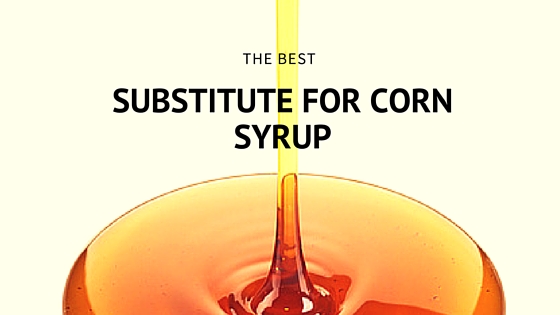Some candy recipes call for corn sugar to prevent sugar crystallization that could result from using cane sugar alone. In this usage, replacing brown sugar would be a bad idea, but replacing dextrose would work OK. If you’re pouring corn syrup over pancakes, maple syrup is a decent substitute.
Corn syrup is not unhealthy or healthy, per se. Its bad reputation entirely unwarranted, and as Makiko Itoh said, it often confused with high-fructose corn syrup (which, curiously, originated as a health food). From this section, you maybe know about substitute for corn syrup. Let’s understand the details.
Getting know: which substitute for corn syrup is beneficial.
I wouldn’t call corn syrup unnatural any more than regular white sugar. That said if you need to substitute for some reason, try another invert sugar. In terms of sweetness, Corn syrup is slightly less sweet than white sugar and is much more strongly hygroscopic. Molasses, maple syrup, and honey are twice as sweet as white sugar. You can make your invert sugar syrup, but honestly, there’s no health difference between that and corn syrup. Substitute for light corn syrup: 1 cup of sugar and 1/4 cup of water. For dark corn syrup, 1 cup of packaged brown sugar and 1/4 cup of water.
Table of Contents
What is glucose syrup?
According to the law in force, glucose syrup a “purified and a concentrated aqueous solution of dietary carbohydrates, obtained from starch and inulin, which must meet the following characteristics:
- dry matter not less than 70% by weight
- dextrose equivalent not less than 20% by weight on dry matter, expressed in D-glucose
- sulfated ash not exceeding 1% by weight on dry matter. “
The dextrose equivalent (or dextrose equivalent, DE) is an index of the content in simple sugars and disaccharides, determining some characteristics of the product, including relative sweetness and anti-freezing power. Glucose syrup contains glucose and fructose, disaccharides (such as maltose ), and polysaccharides. Which affects the sweetness and other characteristics of the product. So if the pure glucose is 100 DE, the glucose syrup always has a DE below 100. If the DE of a product is below 20, it is not possible, by law, to speak of glucose syrup. There an 18 DE product called maltodextrin.
Glucose syrup sold in the form of a thick, clear, and colorless syrup.
How glucose syrup is making – substitute for corn syrup
Glucose syrup can be obtained by acid hydrolysis of starch or by its enzymatic transformation. Corn starch generally used, but rice and wheat can also be used from potatoes, rice, and wheat.
Starch a polysaccharide made up of long chains of glucose molecules that “broken” in two ways. In one with the addition of hydrochloric acid the use of high pressure and temperature; in the second method through the use of enzymes such as alpha-amylase (able to obtain syrups with 10-20% free glucose) and glucoamylase (more powerful, it allows to reach 90% free glucose). These enzymes obtained, industrially, from bacteria or fungi that grown for this purpose.
Acid hydrolysis used to produce glucose syrup with low dextrose equivalent, while for high DE syrups, the second method used.
Characteristics of glucose syrup
As we have seen, glucose syrup is not always the same because it can contain more or less simple sugars: it is, therefore, legitimate to also expect different chemical-physical characteristics.
Glucose syrup is a very variable product, depending on the dextrose equivalence, which generally varies from 20 to 72: with the decrease of the dextrose equivalent, the sweetening, anti-freezing, anti-crystallizing powers, the viscosity, and the ability to bind liquids to decrease.
Glucose syrup is preferred to regular sugar as it is cheaper and for its other critical functional properties. Among these are high fermentability, viscosity, hygroscopy, sweetness, anti-freezing power. The ability to favor Maillard reactions.
A 2018 study showed how glucose syrup can reduce the degradation of wheat starch by reactive oxygen species, suggesting a possible preservative effect of this product.
Nutritional values of glucose syrup – substitute for corn syrup
Glucose syrup, like alcohol, is a compound that is said to have “empty calories.” This product, in fact, despite having a high caloric content, given by the presence of sugars, would not have a real nutritional function. There are no proteins, fats, and vitamins and mineral salts, the latter present only in trace amounts. The very definition of “empty calories” doesn’t make a lot of sense, as we explained in this video.
The glycemic index of this product depends on the value of DE (dextrose equivalent); in particular, as the latter increases, the glycemic index also increases. Depending on the production process and the cereal used as a starch source, glucose syrup can have the different calorie content. The most common one, derived from corn, contains 70 calories per teaspoon, with about 17 g of sugar.
Uses of glucose syrup
Glucose syrup is widely used by the food industry, and not only in pastry and ice cream. In pie, a glucose syrup with a high dextrose equivalent (greater than or equal to 60 DE) generally used, because we want to exploit the anti-crystallizing and binding properties and, in the case of ice cream, also the anti-freezing properties.
Glucose syrup is used in pastry as an agent to prevent crystallization, especially in chewing gums and chocolates; it also provides a homogeneous structure, enhances the taste of the products, and promotes conservation. It also used in jams.
If you’re sweetening a drink, brown sugar will work, and you’ll likely use a little less of it than corn syrup – sucrose is sweeter than glucose in corn syrup. Or you can use agave nectar, which is nearly 90% fructose, even more precious.
